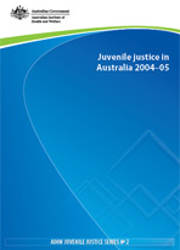Summary
Responsibility for juvenile justice rests at state and territory level and there is marked diversity in terms of legislation, policy and practices among jurisdictions. The age when young people are considered juveniles or adults by the justice system, key policy directions, diversionary options, possible court outcomes, and specific programs and services available to young people are all areas of variation throughout Australia. The Australian Institute of Health and Welfare (AIHW) has worked with the Australasian Juvenile Justice Administrators (AJJA) to develop nationally consistent data on one part of this system, juvenile justice supervision.
This report is based on two data collections of the Juvenile Justice National Minimum Data Set (NMDS):
- young people under juvenile justice supervision
- juvenile justice episodes (supervision periods).
These data, which include both community-based and detention-based supervision, are collected by the AIHW from the departments in each state and territory with particular responsibility for juvenile justice. The data in this report cover the period 2004–05.
The Juvenile Justice NMDS contains information on the movement of young people through supervision and the services received. The data are presented as episodes and supervision periods (for definitions see Section 2.1.2 Episode collection). Although a young person may be subject to a number of legal orders simultaneously, the NMDS does not attempt to provide comprehensive coverage of orders. Rather, the NMDS is based on the experience of the young person under juvenile justice supervision. It reports the highest known type of supervision a young person is subject to at any given point in time, according to a hierarchy (see ‘Hierarchy of episode types’, in Section 2.1.2).



